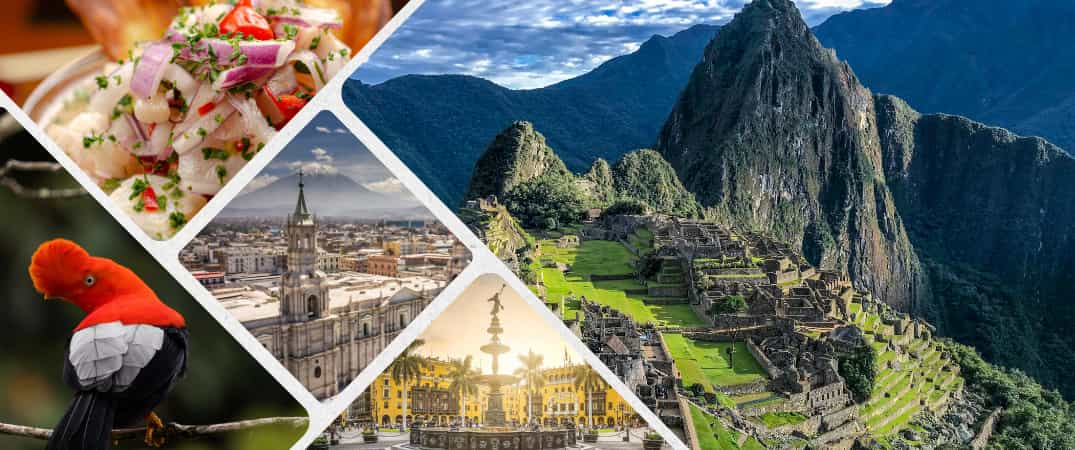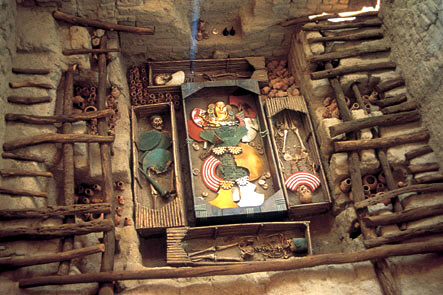In the heart of Lambayeque, in northern Peru, rises a pyramid—not an ancient relic, but a modern structure safeguarding the secrets of one of the most enigmatic civilizations of pre-Columbian America. This is the Royal Tombs of Sipán Museum, a striking monument that feels like it was lifted straight from an archaeological legend.
A Pyramid That Tells a Story
Designed as a stylized replica of the Moche pyramids—structures built between the 2nd and 7th centuries AD in the Moche River Valley—this museum goes far beyond displaying artifacts. It offers an immersive experience that transports visitors 1,700 years into the past, when Moche rulers were buried with treasures, offerings, and even human companions.
At the center of this narrative lies the Lord of Sipán, a powerful Moche ruler whose tomb was discovered in 1987 by Peruvian archaeologist Walter Alva and his team. The discovery, often compared to that of Tutankhamun, revealed a time capsule containing over 2,000 pieces of gold, ceramics, and ornaments—many of them astonishingly well-preserved despite earlier looting.
An Immersive Historical Journey
Today, this treasure is housed in a three-level museum that guides visitors through a chronological story of the discovery, the life of the Lord of Sipán, and the Moche worldview. The dimly lit exhibition halls, theatrical storytelling, and respectful silence create a powerful ambiance of reverence and awe.
Visitors can marvel at gold jewelry, turquoise necklaces, ceremonial ear ornaments, vessels, and copper and silver weaponry. These items weren’t just treasures—they were symbols of divine power buried with the Lord to accompany him to the afterlife. A life-size reconstruction of the burial chamber illustrates how the ruler was entombed, adorned with regalia and surrounded by sacrificial human companions.
Complementing these displays are educational resources like scale models, full-size recreations, and audiovisual installations that bring the Moche legacy to life.
The Struggles Behind the Preservation
In an interview with BioBioChile, Walter Alva shared the challenges of preserving Moche heritage. Much of it remains in private hands due to rampant looting, a practice that dates back to the Spanish conquest. “The problem of looting began during the conquest when the Spaniards plundered temples,” Alva said. “And since then, it became almost customary to loot tombs.”
He noted that the demand from 19th-century European and American museums fueled the illegal trade. Thanks to the Sipán discovery, however, efforts to recover and consolidate artifacts into the museum have intensified. In some cases, retrieving these treasures has required operations akin to FBI-style missions.
“Many pieces are still in private collections or on the black market,” Alva added. “Some are legally owned in Peru, which is at least something—but we’re always working to detect and repatriate those outside the country.”
A Hidden Gem Awaiting Discovery
Despite its historical significance, the Royal Tombs of Sipán Museum remains relatively unknown to international tourists. Unlike Machu Picchu, there are no long queues or overwhelming crowds—only a deeply moving experience that leaves a lasting impression.
Located just 15 minutes from the city of Chiclayo, which has a regional airport with connections to Lima, the museum is easily accessible. Travelers from places like Santiago can fly to Lima and take a local flight to Chiclayo.
Admission costs around 10 Peruvian soles (approximately $2.70 USD), with discounts for students and seniors. The museum is open Tuesday to Sunday, from 9:00 AM to 5:00 PM.
The Royal Tombs of Sipán Museum isn’t just a building—it’s a portal to a forgotten past, a sanctuary for cultural memory, and a testament to the enduring legacy of the Moche civilization. For history lovers and curious minds alike, it’s one of Peru’s best-kept secrets—waiting to be uncovered.

